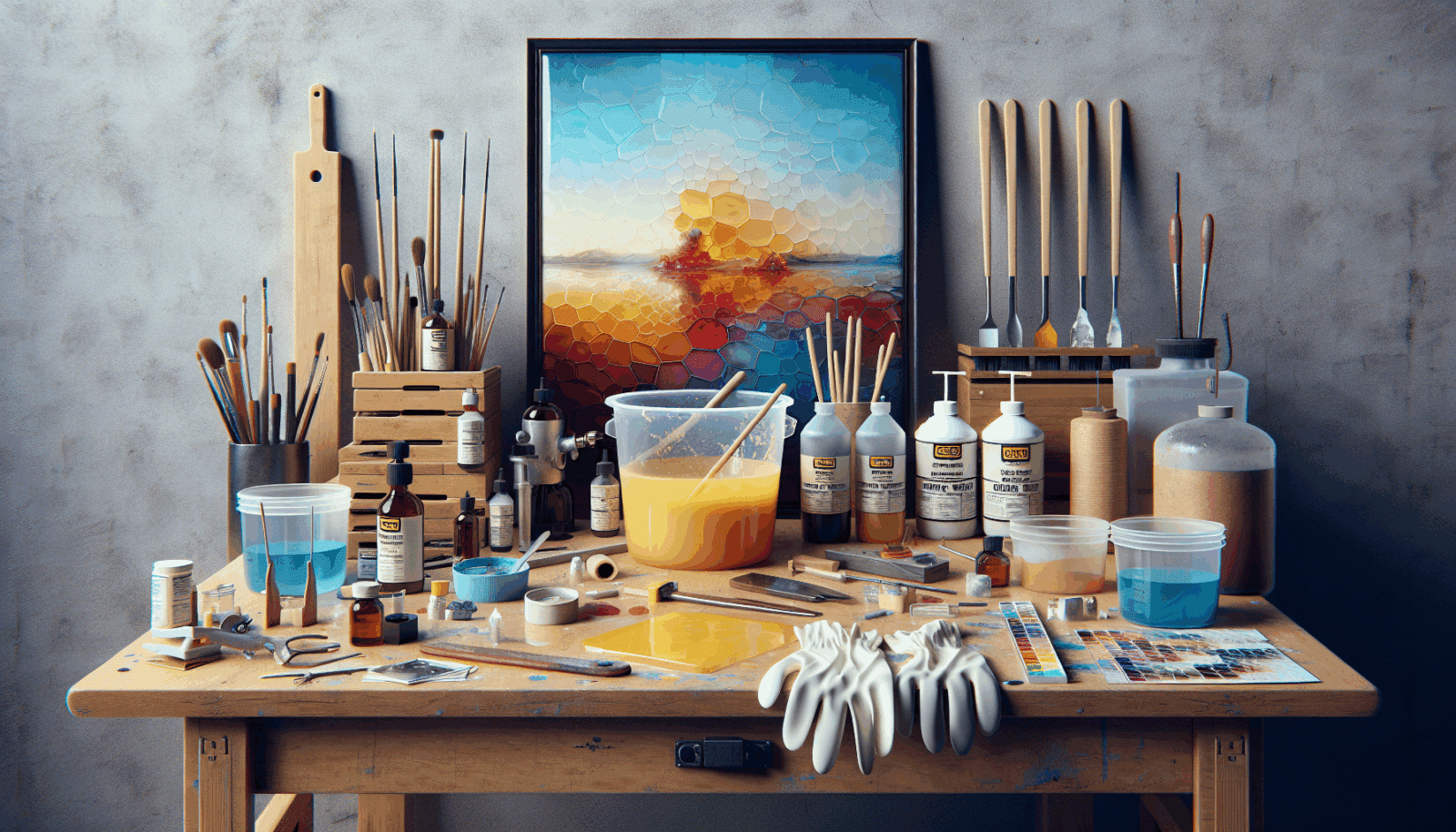Epoxy resin has become a popular choice for homeowners looking to transform their floors into durable, stylish surfaces. At Utah Epoxy Coatings, we understand that tackling your first epoxy project can seem daunting. That’s why we’ve crafted this guide, to demystify the Process and empower you to achieve professional-looking results. Whether you’re aiming to revamp your Garage floor or add a splash of color to your basement, this article is your step-by-step companion.
Contents
Understanding Epoxy Resin
Epoxy resin is a unique blend of materials known for its durability and versatility. By combining a resin with a hardener, the mixture initiates a chemical reaction, resulting in a rigid plastic material. It’s beloved by both professionals and DIY enthusiasts for its strength and glossy finish. Beyond floors, epoxy is used in a variety of Applications, from crafting to construction, thanks to its adhesive properties and resistance to wear and tear.
Delving into the world of epoxy is an adventure in creativity and precision. The first step is selecting the right type of epoxy for your project. With options ranging from self-leveling to high-build epoxies, each type serves a specific purpose and application method. Understanding the distinctions between these options will ensure that your project starts on the right foot.
Preparing Your Surface
Preparation is key when it comes to epoxy applications. A clean, dry, and stable surface is crucial for ensuring that the epoxy adheres properly and cures to a flawless finish. Start by thoroughly cleaning the surface to remove any dust, dirt, or grease. This might involve sweeping, vacuuming, or even power washing for outdoor spaces.
Once clean, assess the surface for any cracks or imperfections. Epoxy is excellent for covering small flaws, but larger issues might require repair before proceeding. This prep work is essential for achieving a smooth, professional-quality finish that lasts.
Choosing Your Epoxy Kit
With numerous epoxy kits on the market, selecting the right one can feel overwhelming. At Utah Epoxy Coatings, we recommend considering a few key factors: the size of your project, the desired finish, and the conditions of the area where the epoxy will be applied. A garage floor, for example, may require a more durable formulation than an art project.
Each kit comes with its own instructions and components, typically including the epoxy resin, a hardener, and sometimes, decorative additives. Ensure you have all necessary tools and safety equipment on hand before starting—proper preparation will streamline the application process and help avoid any hiccups.
Mastering the Mix
Mixing your epoxy correctly is vital to achieve the desired result. Incorrect ratios or improper mixing can lead to issues such as bubbling or a failure to cure. Begin by reading the instructions included with your epoxy kit. These will detail the exact ratio of resin to hardener.
Once you’ve measured out the necessary amounts, mix the components thoroughly. This process is critical—too little mixing can result in a weak finish, while overmixing might introduce air bubbles. Aim for a consistent, lump-free blend before moving on to the application phase.
Application Techniques
Applying epoxy can be both an art and a science. Start by pouring the mixed epoxy onto the prepared surface, using a roller or squeegee to spread it evenly. Work systematically, covering one small area at a time to maintain control over the thickness and ensure an even coat.
For floors, use a roller with an extension pole to make the job easier and to help achieve a uniform layer. If you’re incorporating decorative elements like color flakes, scatter them on top while the epoxy is still wet. This stage is where you can let your creativity shine, experimenting with patterns and Colors to create a truly unique space.
Dealing with Bubbles
After applying epoxy, you might notice tiny bubbles forming on the surface. These are usually caused by air entrapment during mixing or from the application process. A popular technique to remove them is by using a torch or heat gun, carefully waved over the surface. The heat helps the bubbles rise to the surface and pop, leaving behind a smooth finish.
Be cautious with this method—too much heat can damage the epoxy or the underlying surface. Practice on a small, inconspicuous area first to get the hang of it before tackling the entire project.
Curing Time
Patience is crucial when it comes to epoxy curing. The process can take anywhere from several hours to a few days, depending on the type of epoxy used and the conditions of your workspace. During this time, it’s important to keep the area clean, dry, and free from any dust or debris that could mar the surface.
Resist the temptation to rush this stage. Allowing the epoxy to fully cure ensures maximum durability and longevity of your new floor or project. Once cured, you’ll be rewarded with a glossy, high-strength surface that’s ready to withstand the rigors of daily use.
Maintenance and Care
Congratulations, your epoxy project is complete! Now, let’s talk about keeping it looking its best. Epoxy surfaces are relatively low maintenance, requiring only regular cleaning to remove dust or spills. A gentle cleaner and a soft mop are usually all that’s needed to keep your floor or countertop shining.
Avoid abrasive cleaners or pads that can scratch the surface. For floors, placing mats in high-traffic areas can help minimize wear. With proper care, your epoxy project will retain its beauty and functionality for years to come.
Tips for Success
- Start Small – If you’re new to epoxy, consider starting with a smaller project to get a feel for the material and the process. This can help build your confidence and skills.
- Temperature Matters – Epoxy cures best in a warm, dry environment. Check the ideal working temperatures specified in your kit and try to maintain those conditions in your workspace.
- Safety First – Always wear protective gear when working with epoxy, including gloves, goggles, and a respirator if working in a poorly ventilated area. Epoxy can be harsh on skin and respiratory systems.
- Measure Twice – Accuracy is key when mixing your resin and hardener. Double-check your measurements to avoid any curing issues.
- Practice Makes Perfect – Don’t be discouraged by mistakes. Each project is a learning experience, and skills improve with practice. Keep experimenting and have fun with it!
Let’s Get Started
Congratulations! You’re now armed with the knowledge to embark on your epoxy journey. Remember, Utah Epoxy Coatings is here to help with all your epoxy needs, from garage floors to creative projects. If you have any questions or need professional assistance, don’t hesitate to reach out by phone at 801-515-0892 or Request a Free Quote. Together, let’s transform your space into something spectacular.




